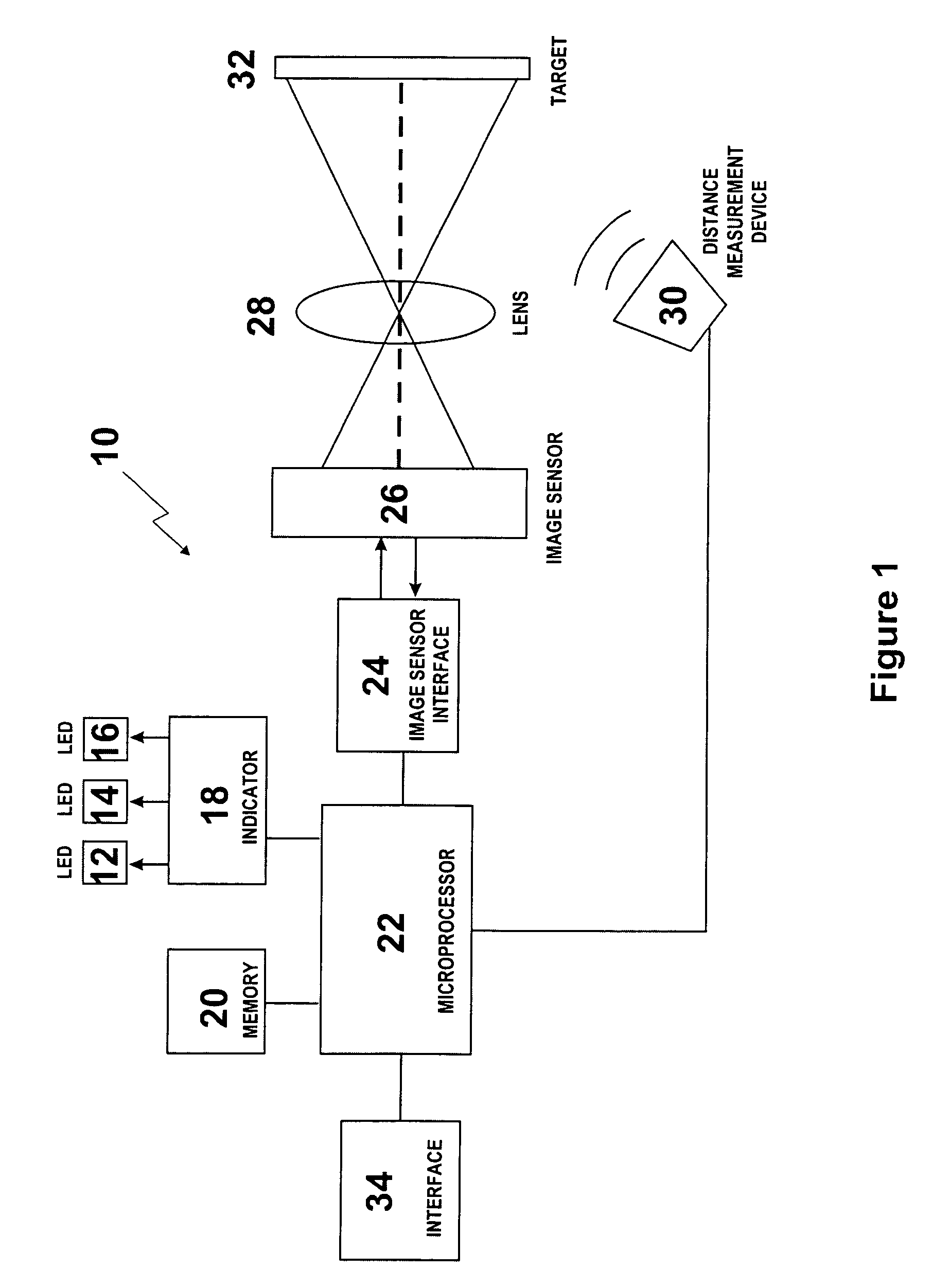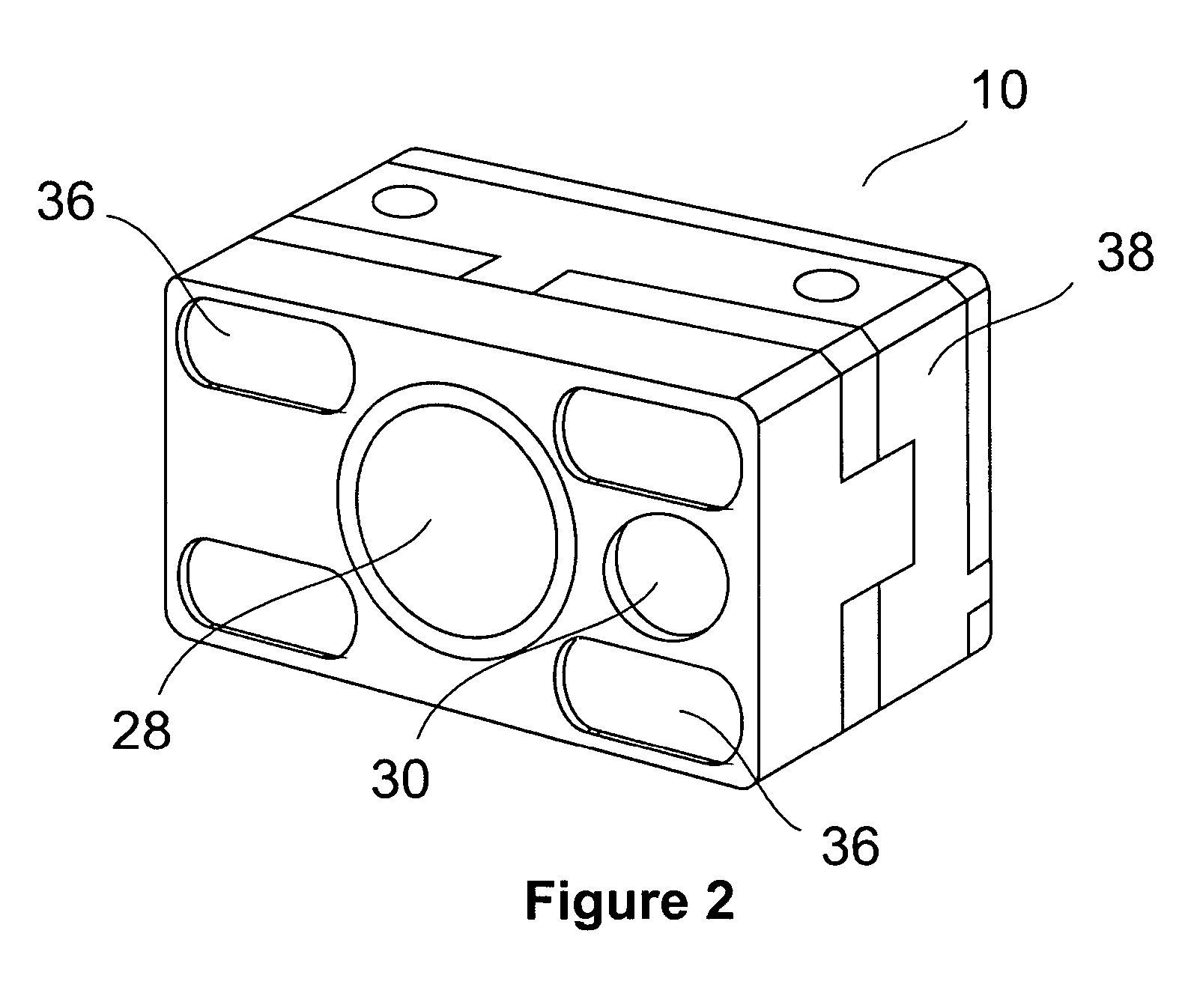Range-finding system for a portable image reader
a range-finding system and portable technology, applied in the direction of sensors, instruments, cameras, etc., can solve the problems of difficult to determine the direction in which the device must be moved in relation to the target, the operator's difficulty in determining the direction of the device, and the capture of images
- Summary
- Abstract
- Description
- Claims
- Application Information
AI Technical Summary
Benefits of technology
Problems solved by technology
Method used
Image
Examples
Embodiment Construction
[0030]For purposes of explanation, specific embodiments are set forth to provide a thorough understanding of the present invention. However, it will be understood by one skilled in the art, from reading this disclosure, that the invention may be practiced without these specific details. Moreover, well-known elements, devices, process steps and the like are not set forth in detail in order to avoid obscuring the scope of the invention described.
[0031]The invention overcomes problems related to targeting a symbology when using portable imaging devices. The apparatus described provides a quick way of positioning the imaging device within an optimal range of distances from the target.
[0032]In accordance with the present invention, a range-finding system uses a distance-measuring device to determine the distance between a target, such as a label containing a bar code, and an image reading device. An operator receives a visual indication which will assist in positioning the image reading ...
PUM
 Login to View More
Login to View More Abstract
Description
Claims
Application Information
 Login to View More
Login to View More - R&D
- Intellectual Property
- Life Sciences
- Materials
- Tech Scout
- Unparalleled Data Quality
- Higher Quality Content
- 60% Fewer Hallucinations
Browse by: Latest US Patents, China's latest patents, Technical Efficacy Thesaurus, Application Domain, Technology Topic, Popular Technical Reports.
© 2025 PatSnap. All rights reserved.Legal|Privacy policy|Modern Slavery Act Transparency Statement|Sitemap|About US| Contact US: help@patsnap.com



